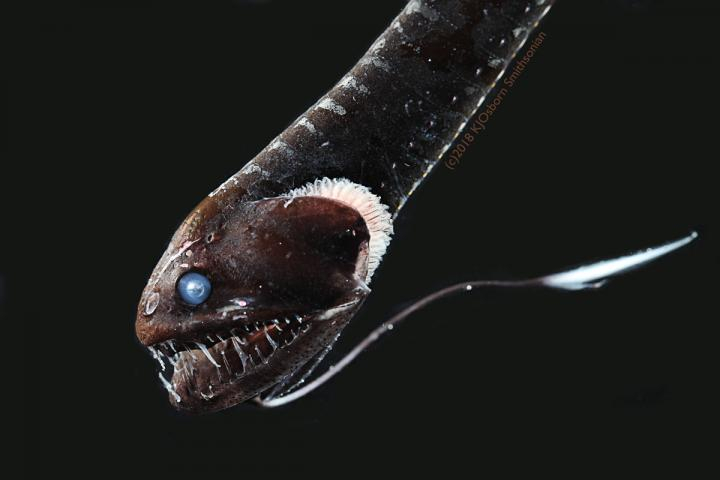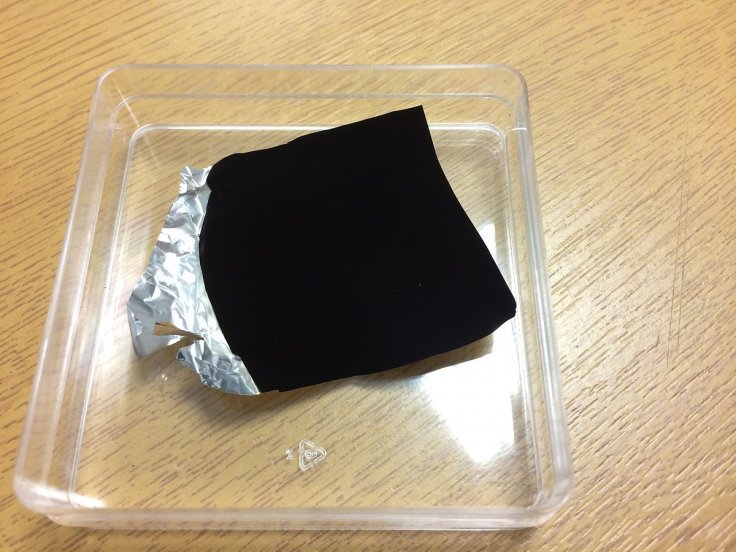Deep-sea can be a terrifying place even for fish that live there. But at the bottom of the ocean, where sun's luminous rays cannot reach, several living organisms have developed bioluminescence to prey on smaller fish and creatures. However, there are evolutionary adaptations for threat response as well. Some deep-sea fish have evolved an ultra-black skin that can absorb 99.5 percent of the light to enable them to blend in the dark.
The researchers from Duke University and the Smithsonian National Museum of Natural History found that such ultra-black fish — fangtooth, the Pacific blackdragon, the anglerfish, and the black swallower — have acquired a distinct feature. They found that under an electron microscope, such fish displayed arrangements of melanosomes of different shapes compared to a regular black fish that allow only 0.05 percent of light to escape.

According to Alexander Davis, a biology Ph.D. student at Duke, the melanosomes of the ultra-black fish are crammed into the skin cells "like a tiny gumball machine, where all of the gumballs are of just the right size and shape to trap light within the machine".
Darker Than Darkness
Scientists, so far, have identified 16 species of such fish that are 20 times darker than any black object. "In the deep, open ocean, there is nowhere to hide and a lot of hungry predators. An animal's only option is to blend in with the background," said Karen Osborn, a zoologist of the Smithsonian Institution's National Museum of Natural History and a co-author of the research.
For the study, which was published in the journal, Current Biology, the team used a remotely operated trawl net to catch 39 fishes that swam at depths of 1,600 meters in the waters of Monterey Bay and the Gulf of Mexico.
Sucking Up All Light
They then used a spectrometer to measure the amount of light that gets reflected off such fish's skin. Among them, a tiny anglerfish was the darkest with soaking up to 99.6 percent of light. Hence, it was a difficult task to photograph such fish. "It didn't matter how you set up the camera or lighting -- they just sucked up all the light," said Osborn.

She added that the skin of such fish can be used to create "flexible ultra-black material for high-tech optics or for camouflage material for night ops".
Only the birds of paradise of Papua New Guinea have darker features to match the anglerfish. Humans too have developed such substance which can absorb 99.965 percent of light. Surrey NanoSystems in the UK discovered the darkest substance named Vantablack in 2014.









